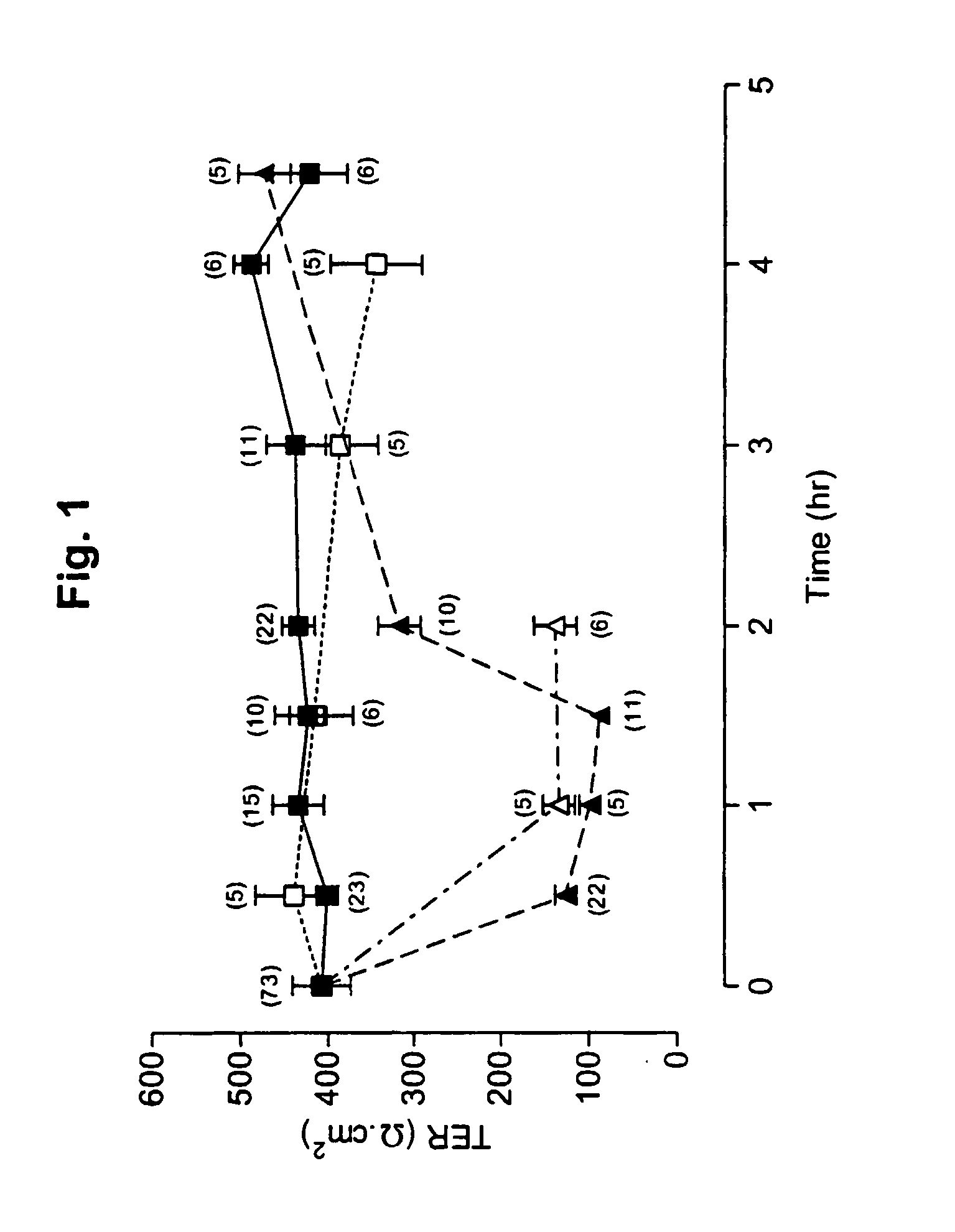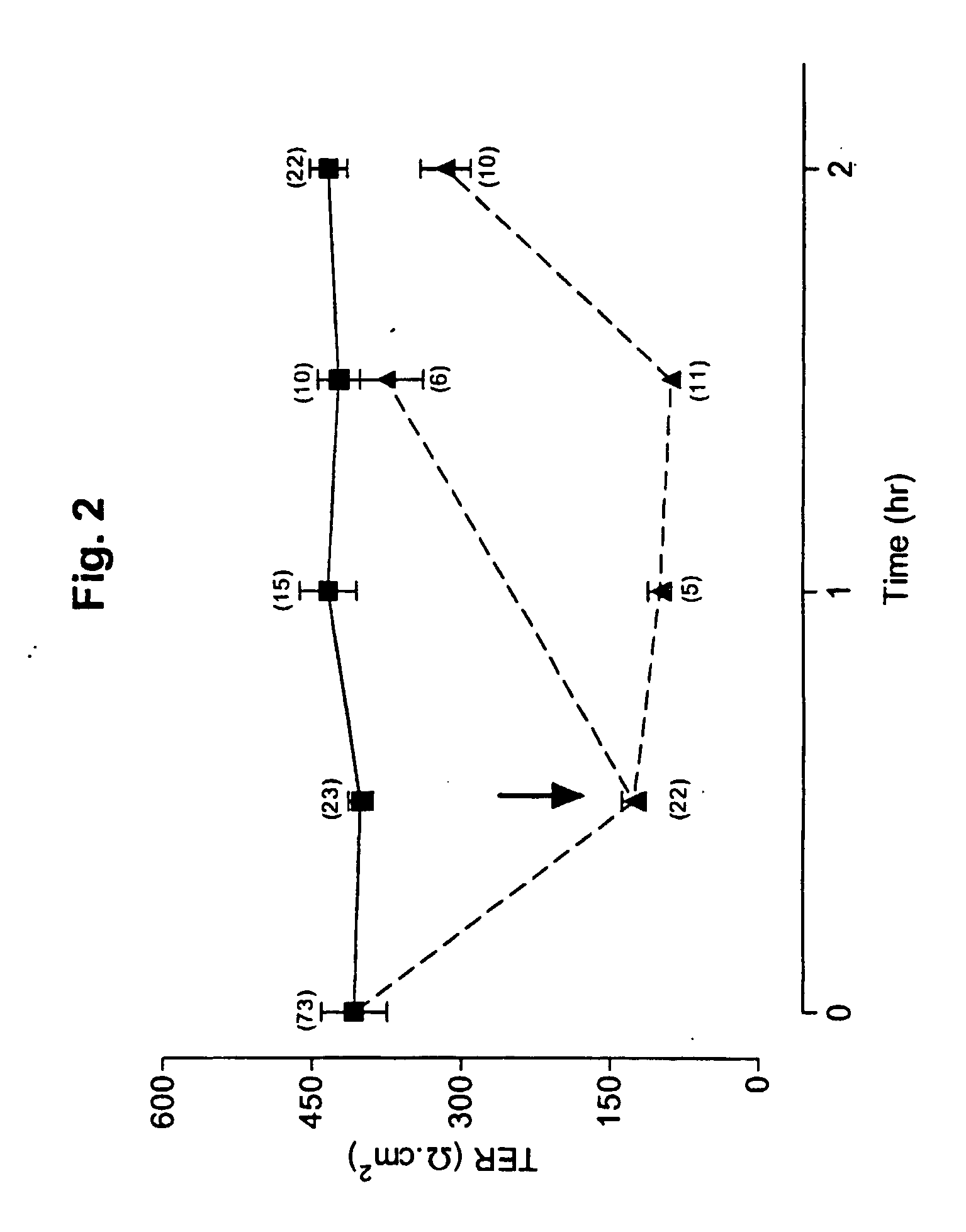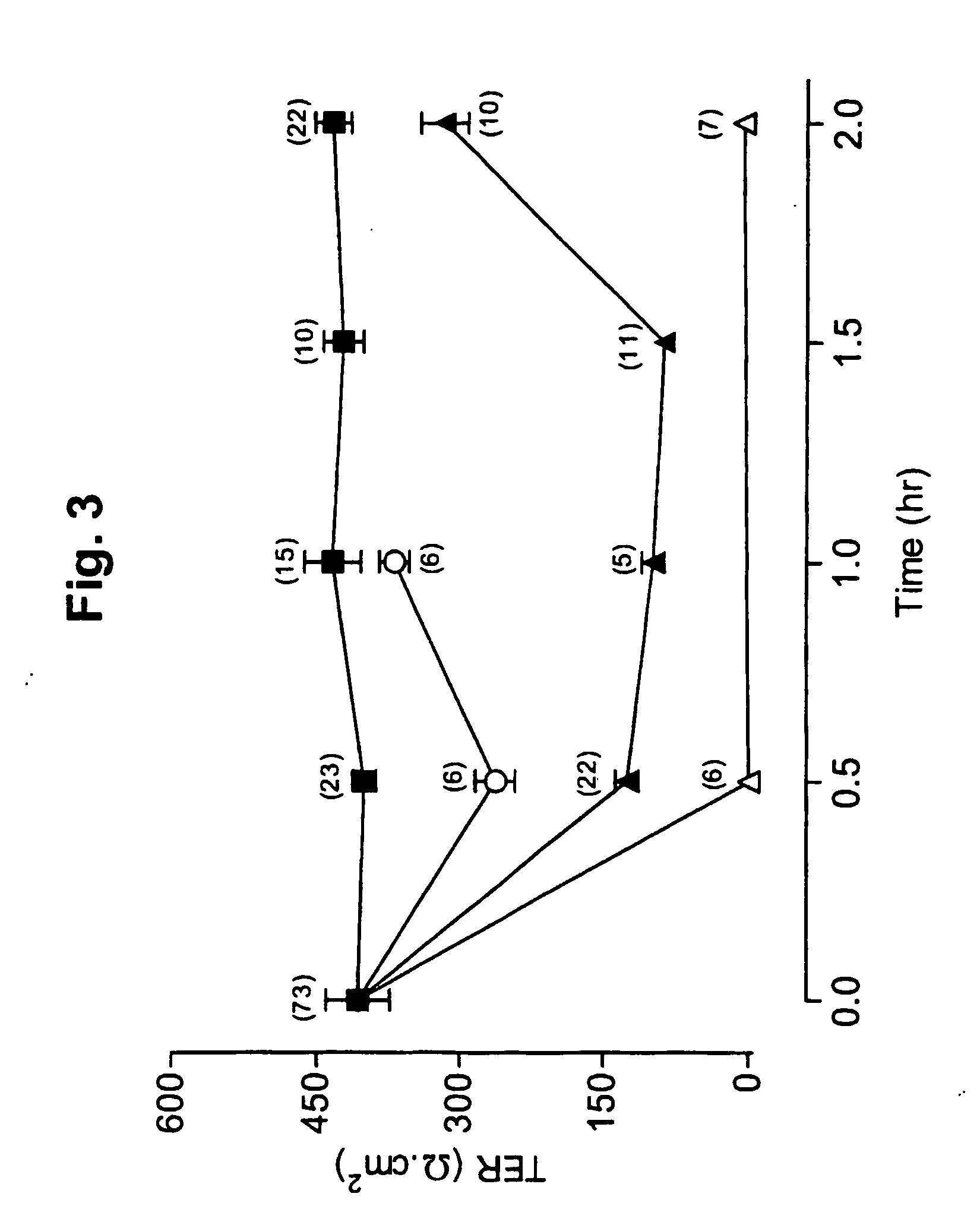Employment of rotavirus proteins, derived proteins and peptides for the modulation of tisssue permeability
a permeability and tissue technology, applied in the direction of viruses, fusion polypeptides, macromolecular non-active ingredients, etc., can solve the problems of morbidity and mortality, the method has been largely inefficient, etc., and achieve the effect of enhancing the passage of therapeutic agents and enhancing the delivery of drugs
- Summary
- Abstract
- Description
- Claims
- Application Information
AI Technical Summary
Benefits of technology
Problems solved by technology
Method used
Image
Examples
example 1
[0127] Effect of rotavirus protein VP8 on the degree of sealing of epithelial monolayers.
[0128] This example illustrates an assay for evaluating the effect of rotavirus proteins on transepithelial electrical resistance.
[0129] A) VP8 Cloning [0130] The RRV VP8 fragment (VP4 gene nucleotides 1 to 750) was cloned in pGEX-4T-1 (Pharmacia) and in pET6HIS plasmids as previously described (Dowling et al., 2000; Isa et al., 1997).
[0131] B) VP5 Cloning [0132] The RRV VP5 fragment (VP4 gene nucleotides 749 to 2347) was cloned in pGEX4T-2 (Pharmacia) as previously described (Zarate et al., 2000b).
[0133] C) Expression, Purification, and Administration of Fusion Proteins
[0134] Expression and purification of fusion proteins was performed following previously described standard procedures (Frangioni et al., 1993). For their experimental use, fusion proteins VP5 and VP8 were dissolved in fresh Dulbecco's minimal essential medium (DMEM) and sterilized by passage through a 0.22 μm filtration uni...
example 2
[0141] VP8 modifies the cell border distribution of TJ proteins.
[0142] This example illustrated an epithelial cell assay for evaluating the effect of VP8 on the distribution of TJ proteins.
[0143] A) Immunolocalization of TJ Proteins.
[0144] MDCK cells were cultured in glass coverslips. Confluent cultures were exposed to 4 μg / ml of GST-VP8 for 1 hr. The cells were then fixed for 30 min with 2% p-formaldehyde in PBS, pH 7.4, and permeabilized for 3 min with 0.2% PBS-TX. Cells were washed five times with PBS and then blocked for 30 minutes with 1% BSA Ig free (Research Organics 1331-a). The monolayers were incubated overnight at 4° C. with rabbit polyclonal antibodies against ZO-1 (Zymed 61-7300, dilution 1:100), Claudin 3 (Zymed 34-1700, dilution 3 lgr / ml) or occludin (Zymed 71-1500, dilution 1:100 in 1% Ig-free BSA). After being washed five times with PBS, the coverslips were incubated for one hour at room temperature with a secondary antibody (FITC-conjugated goat anti-rabbit, cat...
example 3
[0146] Effect of VP8 on the freeze fracture appearance of TJ.
[0147] This example illustrates how the pattern of TJ filaments is modified by VP8.
[0148] A)Freeze Fracture Analysis of TJ.
[0149] Confluent monolayers of MDCK cells were incubated for 1 hour with 4 μg / ml of GST-VP8 dissolved in DMEM, while control monolayers remained in DMEM. Freeze-fracture replicas were obtained from monolayers fixed with 2.5% glutaraldehyde for 30 minutes, and gradually infiltrated with glycerol up to a 20% concentration, in which they were left for 1 hour. The monolayers were then detached from the substrate and frozen in liquid nitrogen. Freeze fracture was carried out at −120° C., and 2 x 10-6 mm Hg using a Balzers apparatus (BAF400T). After evaporation of platinum and carbon, the organic material was digested for 1 hour in chromic mixture. Replicas were extensively washed in distilled water and mounted in Formvar coated grids. The observations were done in an electron microscope JEOL 200EX.
[0150...
PUM
| Property | Measurement | Unit |
|---|---|---|
| Composition | aaaaa | aaaaa |
| Adhesion strength | aaaaa | aaaaa |
| Biological properties | aaaaa | aaaaa |
Abstract
Description
Claims
Application Information
 Login to View More
Login to View More - R&D
- Intellectual Property
- Life Sciences
- Materials
- Tech Scout
- Unparalleled Data Quality
- Higher Quality Content
- 60% Fewer Hallucinations
Browse by: Latest US Patents, China's latest patents, Technical Efficacy Thesaurus, Application Domain, Technology Topic, Popular Technical Reports.
© 2025 PatSnap. All rights reserved.Legal|Privacy policy|Modern Slavery Act Transparency Statement|Sitemap|About US| Contact US: help@patsnap.com



